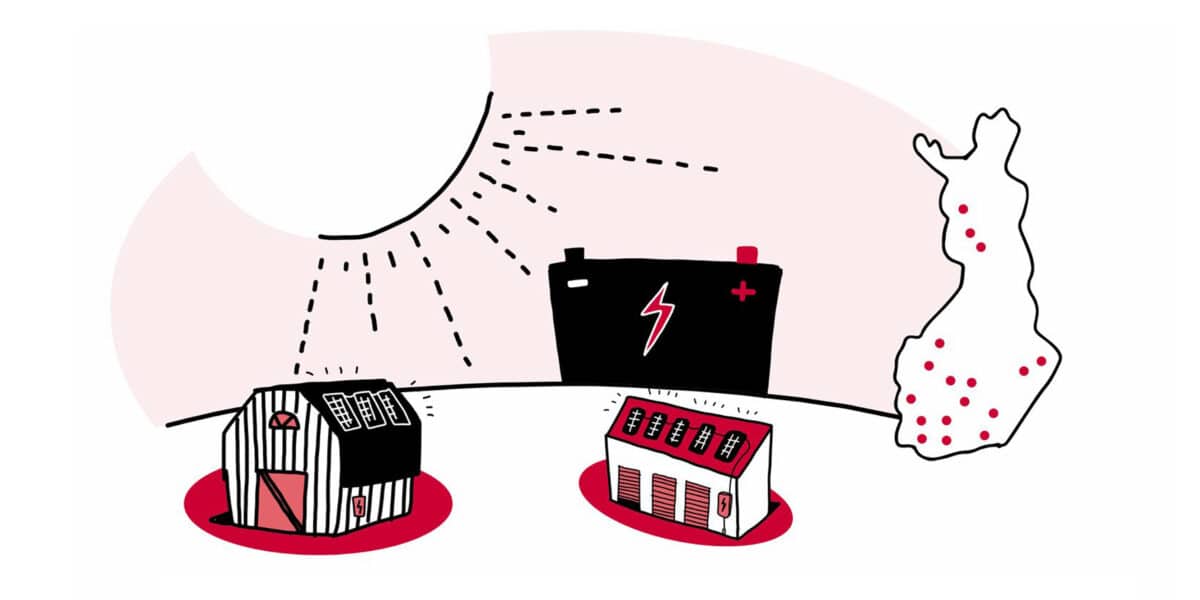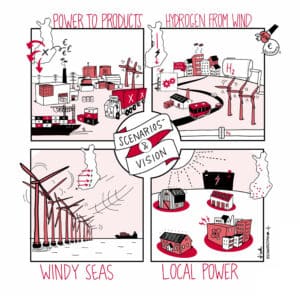Fingrid’s power system vision presents four alternative scenarios for the future. They all foresee the electrification of transport, heating and industry, further sector integration, and Finland reaching its carbon-neutrality targets.
Wind power is the most important form of production. In addition, the scenarios vary in terms of the applications for hydrogen and the scope of hydrogen production.
Fingrid’s Eveliina Seppälä, Specialist and Project Manager of the vision, and Risto Kuusi, Senior Expert,
emphasise that the vision does not set out a ready-made viewpoint or proposal on how to address every issue. Instead, it explains the different perspectives and potential solutions, giving stakeholders some food for thought.
“The power system vision is the continuation of Fingrid’s network vision, completed last year. The idea is to provide an overview of the energy sector in the midst of the energy transition. The scenarios are used as the basis for analysing the development needs of the main grid – what we need to prepare for and what is possible,” Seppälä says.
Sufficient starting points for development work
Kuusi says that the scenarios are intentionally extreme and challenging so that they offer the ingredients for further development.
“All the scenarios are possible, but the most likely outcome may be a combination of these scenarios.”
The question of whether electricity consumption will increase by a large amount – or an absolutely huge amount – depends on how well Finland fares in attracting the kind of investments that demand clean energy.
“Our country is large, sparsely populated and windy, so the conditions are excellent for developing onshore wind power in particular,” Kuusi notes.
Work continues on the vision
Fingrid has now asked its stakeholders for their views on the scenarios used for the vision work and the power system of the future.
“We would like to thank our stakeholders for their feedback. It is great that parties in the sector are also able to set their sights on the future, despite the acute energy crisis we are going through now,” Seppälä says.
The stakeholders who submitted feedback found the themes in the scenarios important, and the worldview in the scenarios was considered to provide a good basis for developing the main grid over the long term.
“One new perspective emerging from the feedback was that Finland also need to consider the broader implications of the scenarios in areas such as our national or regional economies.”
Fingrid is now using the feedback to revise its power system vision further.
“The final version of the vision will be published at the turn of the year, but, naturally, the dialogue will not end there,” Seppälä says.
A massive rise in electricity consumption and production
• Annual electricity consumption is currently around 85 TWh.
• The scenarios envisage electricity consumption in 2035 ranging between 114 TWh and 180 TWh.
• The combined production capacity of wind and solar power was approximately 3,700 MW at the start of 2022.
• The scenarios foresee a combined production capacity of wind and solar power between 22,000 MW and 49,000 MW in 2035.








